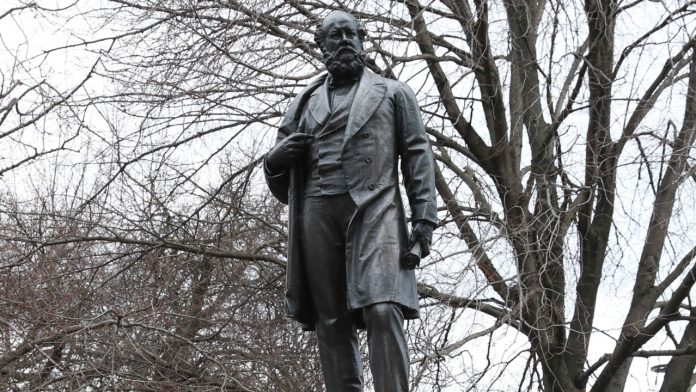The Australian city of Hobart voted late Monday to remove a 132-year-old statue commemorating a politician who stole the skull of an Aboriginal man from a local morgue.
Hobart’s Lord Mayor Anna Reynolds said it was “part of the process of truthtelling” about the history of Tasmania, a state where the Aboriginal population was decimated by disease and brutality after white settlement.
The city council voted 7-4 in favor of removing the statue of William Crowther, who was the leader of Tasmania in the late 1870s.
A surgeon by trade, Crowther in 1869 mutilated the body of a deceased Aboriginal man, William “King Billy” Lanne, removing his skull and replacing it with that of another person.
The theft came amid a tussle between two scientific societies, both of which wanted to claim the right to study the remains of Lanne, thought at the time to be the last Tasmanian Aboriginal man.
Crowther’s actions outraged many at the time, and sparked new laws requiring all medical experiments to have prior consent from the deceased or their family — yet within a decade, the controversial surgeon was elected state premier.
Reynolds said the decision to remove Crowther’s statue was about choosing to not give prominence “to this person, who is a symbol of racism and this science of racial ranking.”
“This unfortunate rhetoric about deleting or canceling history is just really extreme,” she told ABC radio in an interview.
The lord mayor said a new public artwork would be commissioned to replace the statue, which will be conserved.
“It’s not going to be torn down, it’ll be treated respectfully,” she said.
The statue’s removal comes in the wake of the Tasmanian Museum apologizing to the state’s Aboriginal people for its role in the exhumation and desecration of Indigenous remains, largely in the service of discredited racial sciences.
The museum until 1947 publicly displayed the remains of Lanne’s wife, Truganini, expressly against her final wishes.









